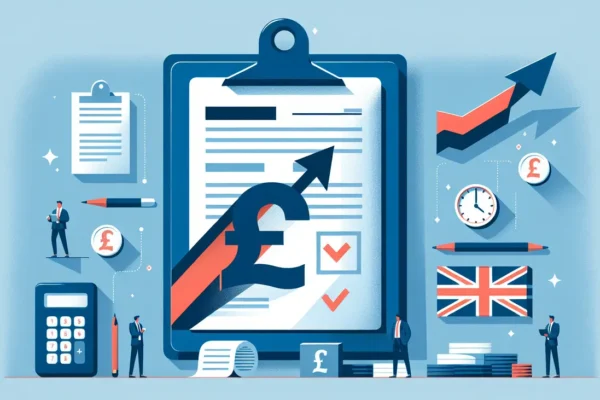Navigating the complexities of B2B debt collection can be challenging, but understanding the key elements can streamline the process and increase success rates. In this guide, we’ll explore the essential factors to consider when managing debt recovery in a business-to-business context.
1. Understanding the Importance of Communication
Clear and consistent communication is crucial in maintaining a stable relationship with your client, even when debts are overdue. Ensuring all parties are on the same page can prevent misunderstandings and foster trust. The art of communication lies not just in speaking, but in listening actively too. Imagine a situation where a client misses a payment; instead of jumping to conclusions, a well-timed and empathetic call can uncover issues you might not have anticipated. Remember, effective communication isn’t about persuasion alone; it’s about building a two-way street where both parties feel heard and valued.
Moreover, leveraging different communication platforms can further enhance the client’s experience. Whether it’s a quick update via email, a detailed discussion over the phone, or a formal letter outlining obligations, choosing the right medium based on the situation is key. It emphasizes your commitment to transparency and diligence. The process of communicating should never feel like a chore; rather, it should be viewed as an opportunity to strengthen alliances and showcase your company’s professionalism.
2. Setting Clear Credit Policies
Establishing well-defined credit policies is imperative for effective debt collection. Clear guidelines on payment terms and conditions help prevent disputes and provide a reference point for collections. When drafting these policies, it’s important to consider the unique dynamics of your industry and tailor the detailing accordingly. A credit policy is not just a document but a foundational pillar that delineates the boundaries of your business transactions. It acts as a safety net both for you and your clients, providing clarity and eliminating guesswork.
Moreover, these policies should not be static. Regular reviews, taking into account market changes and evolving client needs, can enhance their relevance and efficiency. It’s prudent to engage with your financial and legal teams to ensure these policies are robust and compliant with regulations. Transparency in your credit policies can also serve as a differentiator, positioning your company as one that values fairness and mutual respect.
3. Thorough Background Checks
Conducting comprehensive background checks on potential clients can avert future collection issues. Understanding a business’s credit history and financial health can inform your credit decisions. Background checks extend beyond just financials; they encompass the reputational and operational aspects of a business. By analyzing past performance, you can create predictive models to gauge future reliability. It’s not about being skeptical; it’s about being prepared.
Additionally, employing third-party credit assessment tools can sometimes provide a more detached view, free from internal biases. Remember, knowledge is power. The more informed you are about a client, the better positioned you are to offer terms that are mutually beneficial. Always weigh the insights gathered against your risk appetite to make balanced decisions.
4. Utilizing Technology for Efficiency
Leveraging technology can streamline the debt recovery process. Automated systems can track payments, send reminders, and provide valuable data analytics to improve collections. In an era where data is king, technology acts as an enabler to harness it effectively. Automated platforms can consolidate client interactions and payment histories, providing real-time insights that drive proactive decision-making.
Furthermore, integrating Artificial Intelligence (AI) into these systems can further enhance efficiency. AI algorithms can predict payment behaviors and flag potential defaulters, allowing you to take corrective measures swiftly. It’s akin to having a digital assistant that works tirelessly to ensure the financial health of your business. Embracing technology doesn’t mean sidelining human touch; rather, it augments your capabilities, allowing you to focus on strategic initiatives.
5. Personalizing the Approach
Tailoring your approach based on the client’s unique situation can lead to more successful collections. Personalization shows respect for the client’s circumstances and enhances cooperation. For instance, understanding the business cycle of your client can guide when to send payment reminders, avoiding the crunch periods. Personalization isn’t a one-size-fits-all strategy; it requires insight into the client’s operations, industry norms, and even the personalities involved.
A personalized approach doesn’t just facilitate better collections; it fosters goodwill and trust. Clients appreciate being treated as partners rather than faceless entities. This human-centric approach is what often distinguishes thriving businesses. Sometimes, a simple gesture like a personalized note or a call to understand the challenges they face can transform the dynamic in remarkable ways, demonstrating your commitment to a mutually beneficial relationship.
6. Negotiation and Flexibility
Being open to negotiation and offering flexible repayment terms can greatly assist in recovering debts. A cooperative and understanding stance encourages clients to comply with repayment. It’s crucial to recognize that businesses may face unexpected downturns or cash flow issues. Flexibility can come in various forms, such as extended payment plans or temporary adjustments in interest rates.
Negotiation also involves active listening and finding a middle ground that aligns with both parties’ interests. It’s a delicate balance of firmness and empathy, aiming for solutions that uphold financial terms while acknowledging the client’s situation. Successful negotiation isn’t about winning; it’s about finding a sustainable path forward.
7. Documenting All Interactions
Keeping detailed records of all communications and transactions is vital. Documentation serves as evidence and can be crucial in resolving disputes. In the heat of complex negotiations, it’s easy to overlook details, but having comprehensive records ensures you have the building blocks needed for clarity and resolution. This documentation underscores professional rigor and safeguards against potential legal complications.
It’s beneficial to use dedicated software that can store emails, calls, and any agreements made. This not only enhances transparency but also provides a holistic view of the client relationship over time. Regular audits of these records can also provide insights into process improvements and areas needing attention. Remember, documentation is the backbone of business accountability.
8. Understanding Legal Aspects
A solid grasp of the legal framework surrounding debt collection ensures compliance and protects your business. Familiarity with both local and international laws is beneficial. Legal knowledge acts as a protective shield, ensuring your strategies align with regulatory standards. This prevents any unintentional breaches that might lead to legal repercussions.
Moreover, consulting with legal experts can provide tailored advice specific to your industry. Laws can vary widely between regions, and aligning your strategies with local legislation is crucial for maintaining a positive reputation. A proactive approach in educating yourself and your team about relevant legal procedures can mitigate risks and enhance your debt recovery efforts.
9. Financial Analysis and Assessment
Regularly assessing the financial position of your clients helps in understanding their ability to meet financial obligations and adapting your strategies accordingly. Financial analysis isn’t just about numbers; it’s about discerning patterns that inform strategic decisions. By analyzing financial statements and credit scores, you gain insights into a client’s ability to honor commitments.
Engaging with financial analysts can refine your understanding of market trends and client behaviors. Predictive analytics can offer foresight into potential collection challenges, allowing you to adjust your approach proactively. Remember, effective financial assessment is an ongoing process, not a one-time evaluation, ensuring your strategies are relevant and robust.
10. Building Strong Client Relationships
Long-term relationships with clients can facilitate smoother debt recovery processes. Investing in client relationships encourages loyalty and timely payments. It’s like nurturing a garden; consistent care, understanding, and support yield rich, mutual benefits over time. Strong relationships translate to goodwill, which often leads to open communications, even when debts are outstanding.
Consider loyalty programs or client appreciation initiatives that reinforce your commitment to their business. Positive reinforcement can lead to an enthusiastic and productive business environment, where debts are handled more gently. By valuing relationships over transactions, you foster a culture of trust and reciprocity that can significantly ease the debt recovery process.
11. Engaging Debt Collection Professionals
Sometimes, involving third-party debt collection services can be an effective strategy. Professionals bring expertise and a neutral stance, which may be beneficial for resolving complex cases. These experts are well-versed in various recovery methods and can often negotiate favorable terms due to their specialized training. Outsourcing can also free up internal resources, allowing your team to focus on core business operations.
When outsourcing, it’s essential to select a partner whose approach aligns with your company values and client relationship goals. Transparency with the agency about your objectives and their methodologies can ensure a harmonized effort. Remember, the decision to involve professionals should aim to complement, not replace, your internal efforts, creating a hybrid approach for efficient debt recovery.
12. Evaluating the Success of Your Strategies
Regularly reviewing and refining your debt recovery strategies based on performance metrics ensures continuous improvement and adaptation to changing market conditions. Evaluation is a cornerstone of strategic excellence; it offers a reflection on what works, what doesn’t, and where there is room for enhancement.
Using Key Performance Indicators (KPIs) allows you to track success rates, timelines, and client satisfaction levels. This data-driven approach encourages a proactive mindset where strategies evolve rather than stagnate. Moreover, involving teams responsible for implementation in feedback sessions can provide ground-level insights, making the evolution process inclusive and comprehensive.







